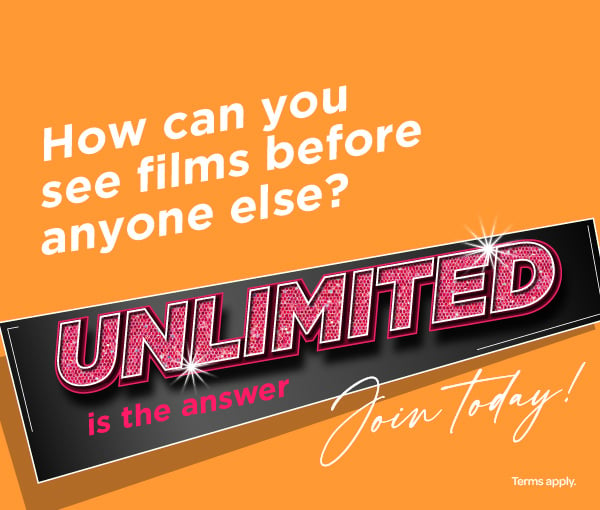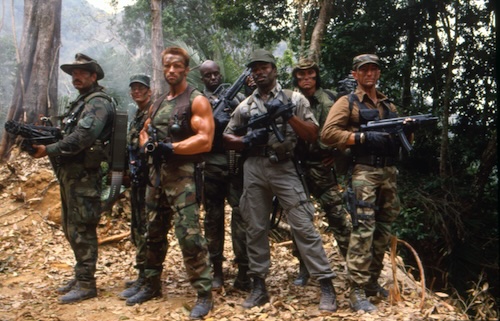
Action Season begins on April 3rd with a stone-cold movie classic. We're talking about Predator, the 1987 Arnold Schwarzenegger hit that pits the Austrian Oak against a relentless, unstoppable killer from another world.
It's time to book your tickets and strap in for an unforgettable experience as we present Predator at Cineworld for just €5. Who could resist the chance to watch this genre-defining thriller on the big screen for a fraction of the price?
Here's why Predator continues to endure as an Arnie action masterpiece.
1. It subverts our expectations by starting as one movie and ending as another
From brawns over brain testosterone flick to survival horror – Predator is far more inventively and intelligently structured than many give it credit for. Credit, where it's due, to writes Jim and John Thomas.
Yes, the movie can be embraced as an ironic, muscly cheese-fest, one packed with memorable lines that could only come from the 1980s. ("If it bleeds, we can kill it.") However, there's genuine artistry in how the movie misleads us and steadily deconstructs its macho silliness, initially presenting a group of seemingly impervious operatives who appear to operate on a level of eighties parody, only to reveal that they're badly, horribly out of their depth.
This steals up in increments, first with the reveal of the chopper and the horrifying, skinned-alive deaths of General Hopper and his men. At first, we and the film's characters attribute this to the actions of guerilla mercenaries, and the later assault on the rebel camp seems to reinforce the film's militaristic narrative. Even the betrayal of Dutch (Arnold Schwarzenegger) by his old friend turned bureaucrat Dillon (the late Carl Weathers) plays into the tropes of the usual eighties action movie fare.
Not long after that, however, and the movie superbly changes tack into spine-tingling suspense. There's the deep-seated fear of the group's tracker and toughest individual, Billy (Sonny Landham), which is enough to strike fear into us, the viewing audience. Then we have the gory and horrific death of Hawkins (Shane Black, who wrote Lethal Weapon in the same year as Predator's release), and all of a sudden we're dealing with a very different threat.
Not only that, the movie itself has been transfigured into something else entirely: a survival monster flick informed by the terrifying abilities of a cloaked extraterrestrial humanoid that hunts humans for sport. This tension escalates as Dutch's crew is picked off one by one, leading the movie to an endgame that we never saw coming from the chopper-landing, cigar-chomping intro. Now, that's smart.
2. Director John McTiernan makes excellent use of the jungle locations
A year before he redefined the action movie with Die Hard, filmmaker John McTiernan immersed us in Predator's steamy and humid jungle locations. The film's tangible atmosphere is a real bonus, further investing us in the notion that Dutch and his team aren't walking, two-dimensional archetypes but flesh and blood humans who sweat and bleed and are, therefore, vulnerable to whatever may be watching from the treeline.
The film was shot on location in various Mexican jungles (no studio set-ups were used to make it easier for the actors), and there's a genuinely oppressive air to the landscape that brilliantly suits the narrative. McTiernan embraces the hilly, waterfall-laden terrain and the fact that the branches of the trees always seem to close in a little too close for comfort. As far as the film's human characters are concerned, this isn't a pleasant or practical environment in which to be hunted by a superior alien monster, and it's no surprise to learn the making of the film was no picnic.
The cast and crew got the trots while staying at their Mexican hotel, temperatures dropped to freezing during night shoots in the jungle and Predator actor Kevin Peter Hall couldn't see out of his mask. Instead, he had to memorise the landscape with the helmet off and subsequently perform his scenes like a dance. Hall said the experience of making Predator "wasn't a movie, it was a survival story for all of us".
Schwarzenegger later said that the hilly terrain made it an especially arduous shoot, and he lost 25 pounds during the filming. The actor said the landscape was "always on a hill. We stood all day long on a hill, one leg down, one leg up. It was terrible".
However, it's this oppressive, punishing sense of physical tactility that seeps into the movie and transforms it from a passive viewing experience into an actively gripping and visceral one.
3. Arnie taps into his rare vulnerable side
Arnold Schwarzenegger has built a career around his stoic invulnerability, not to mention his singular Austrian accent. During his peak from the early 1980s to the mid-1990s, these qualities were deployed to variously antagonistic and humourous effect – just think of the contrast between Schwarzenegger's career-defining turn in The Terminator (1984) and his endearing turn in Twins (1988) as an example.
Yet Predator stands out because it audaciously strips Arnie of his characteristic strength and hardware. Muscles and miniguns simply don't work against this film's antagonist, whose weaponry, smarts and strength are allowed to outstrip Schwarzenegger's central character. This creates a fascinating dynamic as the film proceeds as it tweaks our expectations of the actor's screen persona, forcing him into an almost Heart of Darkness situation as Dutch fights the Predator hand to hand.
Instead of an automatic rifle, Dutch has to fashion his own bow and arrow. Instead of Teflon plot armour that will keep him alive, Dutch must rely on his wits and cake himself in mud to avoid the Predator's thermal heat vision. Rarely, if ever, have we seen an Arnie character placed on the backfoot like this and for all Schwarzenegger's much-criticised acting abilities, he brilliantly sells Dutch's terror as he gets the measure of his formidable opponent.
It's all in the facial expressions, much akin to Schwarzenegger's performance in The Terminator, but here modulated to express greater vulnerability. Think of the terror in Dutch's eyes when Billy makes his last stand against the Predator, or the skin-crawling moment when a disguised Dutch realises the camouflaged creature is crawling down the tree behind him. He's no Laurence Olivier, but Schwarzenegger's underrated physical commitment is one of the most important ingredients in making Predator tick.
4. Stan Winston's monster design is a special effects marvel
Did you know that Jean-Claude Van Damme was originally tapped to play the Predator? Before he became famous, the Belgian actor was compelled to wear a ridiculous-looking monkey suit on location in the Mexican jungle, but was dropped from the production owing to his negative attitude and the shortcomings of the costume itself.
The filmmakers swiftly had to go back to the drawing board. Arnold Schwarzenegger then recommended effects designer Stan Winston with whom he'd worked on The Terminator. Fresh from his pioneering work on that film and also James Cameron's Aliens (1986), Winston and his team crafted another unforgettable monster from raw materials and latex, one that continues to strike fear into the viewer.
It's rare for a movie monster to be even scarier when it unmasks itself, but Predator manages this tricky feat, largely because John McTiernan has kept glimpses of it brief before its final confrontation with Dutch. The mandibled horror that emerges is a masterstroke of effects work, inspired by a conversation between Winston and James Cameron about the latter's desire to see a creature with mandibles.
Of course, Kevin Peter Hall's balletic performance invests the predator with life. The 7ft 2in tall actor, who passed away in 1991 after the release of Predator 2 (1990), invested the creature with more nuance than anyone thought possible, invoking as much wonder as he does terror.
5. Alan Silvestri's score defines suspense
A movie like Predator lives or dies by its soundtrack, and producer Joel Silver made the sage decision to employ Alan Silvestri. At this stage in his career, Silvestri was fresh from the success of his Back to the Future soundtrack, a gloriously rambunctious and full-throttle orchestral salute to the spirit of adventure.
Predator necessitated a different tone, and yet Silvestri's musical voice is so strong that one can recognise the orchestral signatures between the two scores. The primary focus of the Predator score is the percussion: bongos, tom-toms, snares and bass drums brilliantly assimilate the sound of the jungle while also reflecting the propulsive march of Dutch and his comrades.
As a score, Predator is built around two themes: the memorably percussive march for Dutch's team, and the eerie, four-note theme for the Predator itself. Silvestri does an outstanding job of interweaving these themes and playing them off each other, especially as the destinies of the two parties become horribly interwoven as the story proceeds.
Silvestri's music acts as the heartbreat of the jungle, the pulse of the Predator and the adrenaline of Dutch and his crew. It remains a landmark in the composer's career, so it's little wonder that Silvestri returned to score Predator 2 with an increased percussive focus. The composer's classic main theme has subsequently become the musical backbone of the franchise in Predators (2010), scored by John Debney, and The Predator (2018), directed by Shane Black and scored by Henry Jackman.
Click the link below to book your Predator tickets. It screens on April 3rd as the first film in our Action Season.
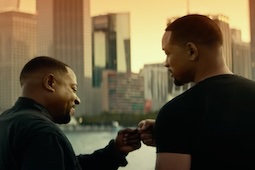
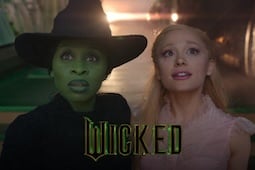
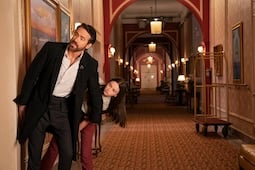

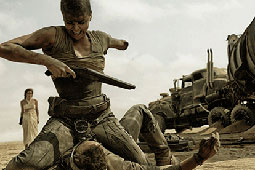
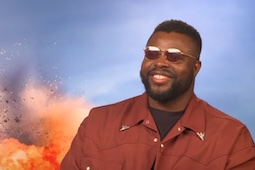
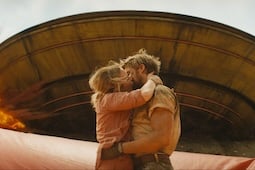
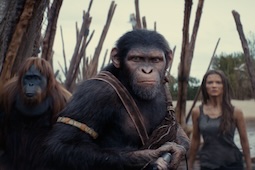






.jpg)
.png)

